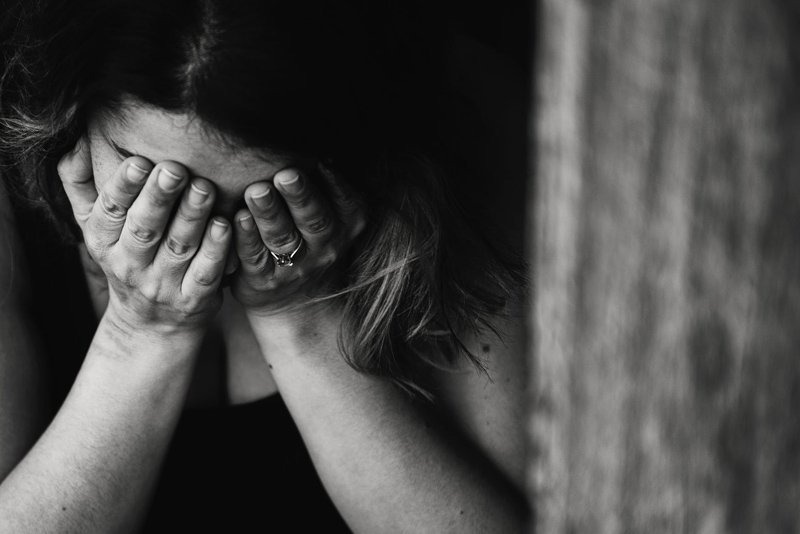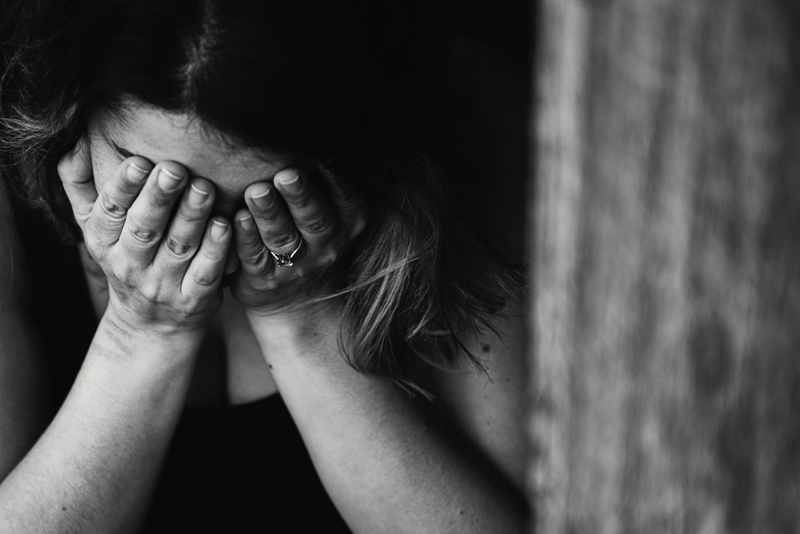Physical Child Abuse Defined

Physical child abuse is any intentional, or unintentional act, by a parent or caregiver inflicted upon a person less than 18 years of age that results in any mark left on the skin, including bruises, cuts, welts, swelling, or other bodily injury. The signs and symptoms of physical abuse vary greatly. Although, physical abuse is the most visible type of child abuse and it is most often the first thing people think of when they hear the words child abuse.
The signs and symptoms of physical abuse are essentially endless. Here is a short list: multiple, unexplainable bruises, scratches, fingernail imprints, human bite marks, and contusions in different stages of healing, burns from cigarettes, hot curling irons, or scalding water, abrasions, cuts or lacerations, and difficulty walking or sitting due to corporal punishment. The severity ranges from leaving a red mark on the skin, bruises all over the body, fractures, Traumatic Brain Injury, skull fractures, brain swelling, coma, and death.
The following incident occurred at an outdoor public pool in Missouri around 20 years ago. A man lay on his stomach in the shallow children’s wading pool, propped up by his elbows, and appeared to be with a little girl 2 to 3 years of age. She kept calling “daddy look” from the side of the pool, trying to catch his attention. He was oblivious to her, as he stared at various women and girls in scantily clad swimming suits, rather than paying attention to his daughter.
The little girl wandered over to him, saying “Daddy,” and patting him with her hand on the shoulder to get his attention, and she got it. He flips over half sitting up, slaps her hard on the bottom, and screams in her face as he pulls her towards him and then pushes her away, “How many times do I have to tell you! NO HITTING!” Now, in fact, he had everyone’s attention.
Most people realized they were staring in shock at him, and quickly looked away to avoid eye contact, mumbled under their breath, and pretended nothing had happened. Seeing blatant physical abuse causes a reaction that cannot be controlled, and before I knew what I was doing I had stood up, moved toward him, and very loudly and slowly said, “How does hitting a child teach her to stop hitting %$#$%^&! (You can fill in the last word for yourself).
Looking startled, he turned in my direction, began standing up, and said, “What?” I picked up my daughter, and as I left the area I replied, “You are sending her a mixed message by hitting her and telling her not to hit. She was just trying to get your attention!”
Physical abuse affects both genders, and knows no boundaries when it comes to ethnic groups, or cultures. It does not discriminate by race, religion, creed or socio-economic life style. Physical abuse can occur at any time, any place, and at any age after birth. However, not all-physical abuse is intentional, it can be accidental, but abuse is still abuse regardless of intent.
The Child Welfare Agency defines physical abuse as, “a non-accidental trauma or physical injury caused by punching, beating, kicking, biting, burning or otherwise harming a child, physical abuse is the most visible form of child maltreatment.” If you suspect a child is experiencing physical abuse due to frequent absences from school, or a physical sign of injury, ask the child directly how the injury occurred. Does the child become withdrawn, changing his or her account of what happened? Is the injury consistent with how the child describes he or she was injured?
When talking to the parent or caregiver of the child he or she may describe their child as awkward, clumsy, accident prone, or careless. Frequently, the parent or caregivers explanation of what happened will differ greatly from the child’s interpretation. Abusers may keep their child out of school when an injury occurs, in hopes that the injury will heal be for the possibility of discovery. Another warning sign is a child is dressed in long sleeves when the weather is hot, or the child refuses to change into their gym clothes for fear of others noticing their injuries. They may also avoid invitations to go swimming or for sleepovers.
If one feels a child is being physical abused he or she should contact the Childhelp National Child Abuse Hotline and report his or her concerns. It is common that close family members realize what is happening in the family, but they may fear retaliation if they intervene. However, when calling the National Child Abuse Hotline, the caller may remain anonymous. Anyone who fails to intervene or to report child abuse, is equally responsible for everything that happens to that child from that moment forward.
Ignorance is not bliss…it is deadly. In America, statistics confirm, “Nearly 5 children die every day in America from abuse and neglect” according to The National Children’s Alliance (NCA).
The NCA provided the following statistics regarding child abuse in 2012, “among the nearly 287,000 children served by Children’s Advocacy Centers around the country…49,155 children reported physical abuse.” These were the cases of physical abuse discovered, or reported. The remaining question is how many children suffer physical abuse and are never reported or discovered?
To report child abuse or neglect call the National Child Abuse Hotline at 1-800-4-A-CHILD or 1-800-422-4453.
Web Resources:
Child Physical Abuse Fact Sheet, www.nctsnet.org (accessed August 30, 2013).
Definitions of Child Abuse & Neglect, www.childwelfare.gov (accessed August 30, 2013).
National Statistics on Child Abuse, www.nationalchildrensalliance.org (accessed August 30, 2013).
The signs and symptoms of physical abuse are essentially endless. Here is a short list: multiple, unexplainable bruises, scratches, fingernail imprints, human bite marks, and contusions in different stages of healing, burns from cigarettes, hot curling irons, or scalding water, abrasions, cuts or lacerations, and difficulty walking or sitting due to corporal punishment. The severity ranges from leaving a red mark on the skin, bruises all over the body, fractures, Traumatic Brain Injury, skull fractures, brain swelling, coma, and death.
The following incident occurred at an outdoor public pool in Missouri around 20 years ago. A man lay on his stomach in the shallow children’s wading pool, propped up by his elbows, and appeared to be with a little girl 2 to 3 years of age. She kept calling “daddy look” from the side of the pool, trying to catch his attention. He was oblivious to her, as he stared at various women and girls in scantily clad swimming suits, rather than paying attention to his daughter.
The little girl wandered over to him, saying “Daddy,” and patting him with her hand on the shoulder to get his attention, and she got it. He flips over half sitting up, slaps her hard on the bottom, and screams in her face as he pulls her towards him and then pushes her away, “How many times do I have to tell you! NO HITTING!” Now, in fact, he had everyone’s attention.
Most people realized they were staring in shock at him, and quickly looked away to avoid eye contact, mumbled under their breath, and pretended nothing had happened. Seeing blatant physical abuse causes a reaction that cannot be controlled, and before I knew what I was doing I had stood up, moved toward him, and very loudly and slowly said, “How does hitting a child teach her to stop hitting %$#$%^&! (You can fill in the last word for yourself).
Looking startled, he turned in my direction, began standing up, and said, “What?” I picked up my daughter, and as I left the area I replied, “You are sending her a mixed message by hitting her and telling her not to hit. She was just trying to get your attention!”
Physical abuse affects both genders, and knows no boundaries when it comes to ethnic groups, or cultures. It does not discriminate by race, religion, creed or socio-economic life style. Physical abuse can occur at any time, any place, and at any age after birth. However, not all-physical abuse is intentional, it can be accidental, but abuse is still abuse regardless of intent.
The Child Welfare Agency defines physical abuse as, “a non-accidental trauma or physical injury caused by punching, beating, kicking, biting, burning or otherwise harming a child, physical abuse is the most visible form of child maltreatment.” If you suspect a child is experiencing physical abuse due to frequent absences from school, or a physical sign of injury, ask the child directly how the injury occurred. Does the child become withdrawn, changing his or her account of what happened? Is the injury consistent with how the child describes he or she was injured?
When talking to the parent or caregiver of the child he or she may describe their child as awkward, clumsy, accident prone, or careless. Frequently, the parent or caregivers explanation of what happened will differ greatly from the child’s interpretation. Abusers may keep their child out of school when an injury occurs, in hopes that the injury will heal be for the possibility of discovery. Another warning sign is a child is dressed in long sleeves when the weather is hot, or the child refuses to change into their gym clothes for fear of others noticing their injuries. They may also avoid invitations to go swimming or for sleepovers.
If one feels a child is being physical abused he or she should contact the Childhelp National Child Abuse Hotline and report his or her concerns. It is common that close family members realize what is happening in the family, but they may fear retaliation if they intervene. However, when calling the National Child Abuse Hotline, the caller may remain anonymous. Anyone who fails to intervene or to report child abuse, is equally responsible for everything that happens to that child from that moment forward.
Ignorance is not bliss…it is deadly. In America, statistics confirm, “Nearly 5 children die every day in America from abuse and neglect” according to The National Children’s Alliance (NCA).
The NCA provided the following statistics regarding child abuse in 2012, “among the nearly 287,000 children served by Children’s Advocacy Centers around the country…49,155 children reported physical abuse.” These were the cases of physical abuse discovered, or reported. The remaining question is how many children suffer physical abuse and are never reported or discovered?
To report child abuse or neglect call the National Child Abuse Hotline at 1-800-4-A-CHILD or 1-800-422-4453.
Web Resources:
Child Physical Abuse Fact Sheet, www.nctsnet.org (accessed August 30, 2013).
Definitions of Child Abuse & Neglect, www.childwelfare.gov (accessed August 30, 2013).
National Statistics on Child Abuse, www.nationalchildrensalliance.org (accessed August 30, 2013).
You Should Also Read:
National Child Abuse Hotline

Related Articles
Editor's Picks Articles
Top Ten Articles
Previous Features
Site Map
Content copyright © 2023 by Erika Lyn Smith. All rights reserved.
This content was written by Erika Lyn Smith. If you wish to use this content in any manner, you need written permission. Contact Erika Lyn Smith for details.



